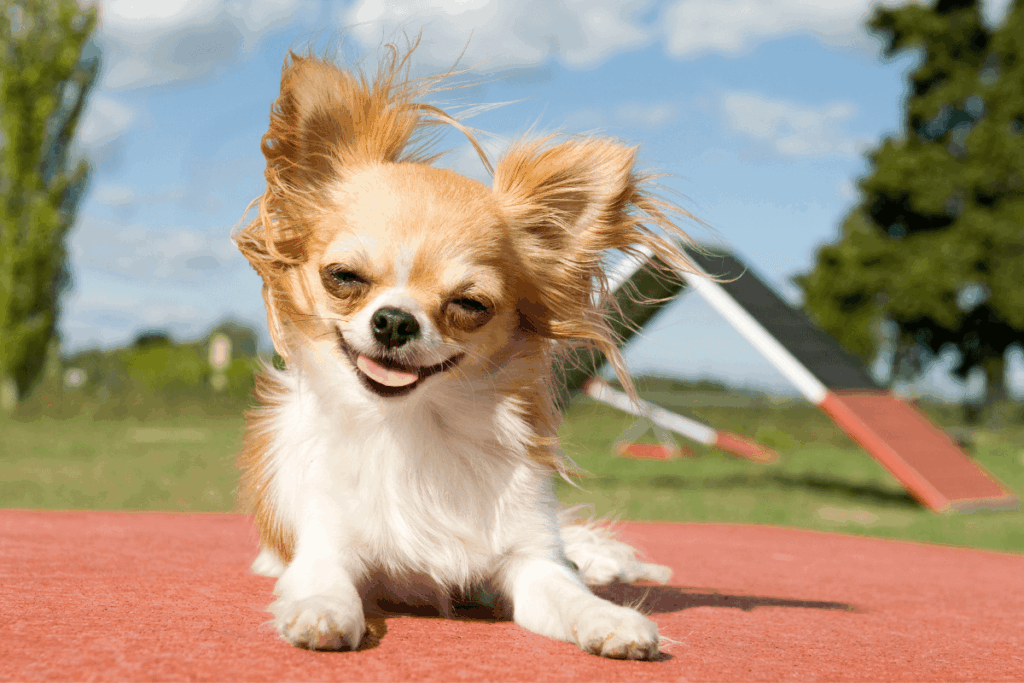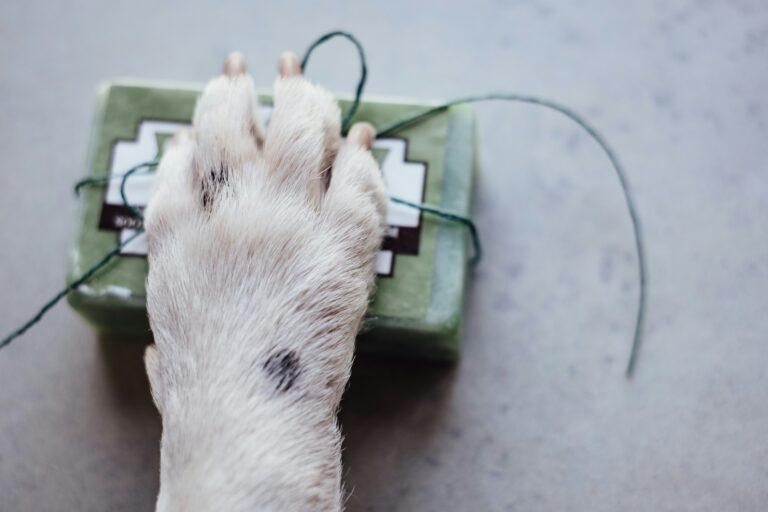In a world where our canine companions are living longer than ever before, providing the right care for your aging small dog becomes crucial. Navigating the golden years of your furry friend can indeed be a challenge. “Forever Young: The Ultimate Guide to Caring for Your Aging Small Dog and Keeping Them Happy and Healthy” delves into this topic extensively.
In this comprehensive guide, we’ll unlock the secrets to keeping your small dog youthful and vibrant, regardless of their age. This includes a holistic approach, covering everything from nutrition, exercise, mental stimulation, and preventive healthcare. Our aim is to equip pet parents with knowledge and practical strategies that will significantly enhance their pets’ quality of life.

Furthermore, we will address common health issues that tend to affect older dogs, such as arthritis, dental diseases, heart conditions, and vision loss. Each section offers in-depth explanations and practical advice on managing these conditions. Plus, we’ll share insights from veterinarians and pet care experts, ensuring you receive the most accurate and beneficial information.
The journey with an aging pet can be filled with mixed emotions – while it’s a privilege to witness your pet grow old, it also brings unique challenges. This guide aims to support pet parents during this journey, providing a roadmap to help navigate these precious years with confidence and grace.
To conclude, whether you’re a seasoned pet parent or welcoming an older dog into your home for the first time, “Forever Young” will serve as an invaluable resource. It offers a wealth of knowledge, tips, and tools designed to help your small dog live out their golden years in the happiest, healthiest way possible. Get ready to enrich the life of your aging canine companion and strengthen the bond you share during these golden years.
Understanding Ageing in Small Dogs
As small dogs mature, they experience changes in their physical and mental health, similar to humans. Their metabolism slows down, leading to weight gain and less energy. Their joints may start to stiffen and their senses may not be as sharp as they once were. Cognitive changes can also occur, resulting in confusion or forgetfulness. Understanding these shifts is the first step towards providing the best care for your ageing pet.
Physical Changes in Aging Small Dogs
A clear sign of aging in small dogs is a decrease in their physical activity. They may become less enthusiastic about walks or play sessions. Also, their appetite might change, and you might notice weight fluctuations. They might also develop conditions like arthritis or other joint issues, which can be managed with proper care and treatment. Regular vet checkups become even more crucial at this stage to monitor these changes and nip any potential health issues in the bud.
Cognitive Changes in Aging Small Dogs
Cognitive dysfunction syndrome (CDS) is a condition that affects many senior dogs, causing changes in awareness, learning, memory, and responsiveness. Symptoms might include disorientation, changes in sleep patterns, or reduced interaction with family members. If you notice these changes, it’s essential to seek veterinary advice, as treatments can manage the symptoms and improve your dog’s quality of life.
Maintaining the Health of Aging Small Dogs
Ensuring your aging small dog stays healthy requires a combination of regular vet check-ups, balanced diet, physical activity, and mental stimulation.

Regular Vet Check-ups
Regular vet check-ups are essential to monitor your dog’s health as they age. Vets can provide necessary vaccinations, carry out routine tests to check for diseases, and provide treatments for any health conditions. A routine check-up should include weight monitoring, dental care, and checks for heart disease, kidney disease, and arthritis.
Proper Nutrition
As dogs age, their nutritional needs change. They may require fewer calories, more fiber, and a balance of specific nutrients. A diet formulated for senior dogs can help meet these needs. It’s also crucial to monitor your dog’s weight and prevent obesity, which can lead to other health issues.
Physical Activity
Regular physical activity helps maintain a healthy weight and keeps the joints flexible. It also provides mental stimulation, reducing the risk of cognitive decline. The amount and type of activity should be tailored to your dog’s health and energy level.
Mental Stimulation
Mental stimulation is as essential as physical activity for aging dogs. Interactive toys, puzzle feeders, and training games can keep their minds sharp. Social interactions with other dogs or people can also provide stimulation.
Noise Reduction and Quiet Spaces
As dogs age, they often become more sensitive to loud or sudden noises. This heightened sensitivity can lead to anxiety or stress, especially in high-traffic households or during events like thunderstorms or fireworks. Creating a quiet retreat area for your dog—such as a corner with soft blankets, sound-absorbing panels, or even a white noise machine—can offer relief and a place to feel safe.
Avoid placing your dog’s bed near doors, TVs, or windows where noise and visual distractions can be overwhelming. A crate with a cover or a designated calm room can also help minimize stimuli and allow for uninterrupted rest.
Lighting Considerations
Vision changes are common in aging dogs, and reduced lighting can cause disorientation. Make sure your home is well-lit, particularly around staircases, hallways, and doorways. Nightlights can be especially useful for dogs who wander at night or get up to use pee pads or drink water. Avoid moving furniture around frequently, as this can confuse a dog with limited sight.
In cases of significant vision impairment, tactile cues such as rugs or textured floor mats can help your dog navigate their space confidently.
Non-Slip Flooring Solutions
Older dogs are more prone to slips and falls due to weakened muscles, arthritis, or joint stiffness. Hardwood, tile, and laminate flooring can become hazardous. Placing non-slip rugs or traction mats in key areas—like near food bowls, beds, or commonly used walkways—can significantly improve safety.
There are also anti-slip paw balms and grip socks available that can enhance traction for dogs who have trouble with flooring. Ensure any rugs used are secured with non-slip backing to prevent movement.
Elevated Dining Stations
Bending down to eat or drink may become difficult or painful for dogs with arthritis or spinal issues. Elevated bowls reduce strain on the neck, back, and joints, encouraging better posture and more comfortable mealtime experiences. Adjustable feeding stands allow you to modify height as needed and are especially helpful for small breeds prone to tracheal collapse.
Ensure the water bowl remains full and is refreshed regularly to encourage hydration, which becomes even more vital as your dog ages.
Indoor Potty Options
Incontinence or reduced bladder control is a reality for many senior dogs. To accommodate this, indoor potty solutions can help maintain cleanliness and reduce stress for both the dog and owner. Options include reusable pee pads, grass-like potty stations, and even doggy litter boxes.
Train your dog to use these stations just as you would train a puppy. Consistency and praise help maintain dignity and reduce the risk of accidents in unwanted areas.
Creating a Predictable Daily Routine
A consistent daily routine offers structure and reduces confusion for senior dogs. Feeding, walks, medications, grooming, and rest periods should happen around the same times each day. Dogs thrive on predictability, and having a set schedule supports both cognitive and emotional health.
When changes are necessary—such as travel or adding a new pet—introduce them gradually and provide extra reassurance through voice, scent, and familiar objects like toys or bedding.
Safe Outdoor Time
Spending time outside remains beneficial for mental stimulation, vitamin D, and fresh air. However, the backyard or park may need adjustments for an aging dog’s safety. Fence the yard securely, ensure gates are latched, and remove tripping hazards such as branches, hoses, or gardening tools.
If your dog struggles with mobility, consider using a dog stroller for longer outdoor sessions. Sloped ramps instead of steps also make it easier to navigate patios or porches.
Senior-Friendly Toys and Engagement Tools
Physical play remains important, but your dog may not enjoy vigorous fetch sessions as they once did. Instead, try gentle tug toys, plush squeakers, or rolling treat balls that reward slower, more deliberate movements.
Puzzle feeders and snuffle mats provide excellent mental enrichment without physical exertion. Rotate toys weekly to keep interest high and prevent boredom. Consider toys with textured surfaces or mild sounds to stimulate dogs with declining vision or hearing.
Maintaining Hygiene and Grooming Comfort
Older dogs often need more help maintaining hygiene, particularly if they suffer from incontinence, arthritis, or a less effective immune system. Frequent brushing helps manage shedding and distributes natural oils. Use soft-bristle brushes to avoid irritating sensitive skin.
When it comes to bathing, opt for lukewarm water and mild, hypoallergenic shampoos. Non-slip bath mats and handheld showerheads make bath time safer. Some older dogs benefit from dry shampoos or grooming wipes between washes.
Nail trimming becomes especially important, as long nails can affect gait and cause discomfort. If your dog becomes anxious or squirmy, try trimming one paw per session to reduce stress.
Monitoring for Signs of Discomfort
Your dog may not always communicate pain clearly. Learn to recognize subtle signs of discomfort, such as licking a particular joint, avoiding stairs, sleeping excessively, or sudden irritability. Keep a log of new behaviors and discuss them during vet visits.
Many dogs with arthritis, hip dysplasia, or chronic illness benefit from therapies like laser therapy, acupuncture, or hydrotherapy. These treatments can improve mobility and reduce dependence on medications.
Investing in Mobility Aids
For dogs with more pronounced mobility challenges, there are several assistive devices that can improve quality of life. Rear-end harnesses, slings, and wheelchairs are designed to support weak limbs and facilitate movement.
Dog boots with traction soles can also help, especially on outdoor terrain. Make sure any mobility aid is fitted properly and used under supervision to avoid additional strain or injury.
Comfort Items and Scented Familiarity
The comfort of familiar scents can be incredibly grounding for aging dogs, especially those facing cognitive decline. Keep their bed, toys, or blankets unwashed for a little longer than usual so that the scent remains consistent. Avoid strong perfumes or cleaning products near your dog’s resting area.
Lavender-scented sprays made for pets may promote relaxation, but always ensure any fragrance used is pet-safe and introduced gradually.
Travel Adjustments for Senior Dogs
If travel is unavoidable, make accommodations to minimize stress. Bring familiar items like your dog’s bed or favorite toy. Use calming supplements or pheromone sprays approved by your vet. Limit travel duration and provide frequent rest breaks for stretching, water, and potty breaks.
For air travel, check with airlines about their policies for senior dogs. Some allow small dogs in cabin carriers, but it’s critical to assess whether your pet is physically and emotionally fit for the journey.
Addressing Isolation and Boredom
Just like humans, dogs can feel lonely. If your aging pup is home alone for long periods, consider a pet camera that allows you to check in and speak to them remotely. You can also leave calming music or nature sounds playing in the background.
Hiring a pet sitter or arranging occasional visits from a dog-friendly friend can provide needed companionship and stimulation. Dogs who have grown up with human company often become anxious in silence or solitude.
Supporting Hearing and Vision Loss
Dogs that can’t hear you approaching may become startled, so approach gently and tap lightly on the floor as a cue. Use hand signals for basic commands, and keep pathways clear of obstacles to support confident navigation.
If your dog’s vision is deteriorating, avoid sudden furniture rearrangements. Teach them cues like “step up” or “careful” to guide them around the home. Some owners also use scent markers (essential oils in small amounts) on doorway corners to aid orientation.
The Emotional Needs of Aging Small Dogs
Older dogs need emotional care and attention as much as they need physical care.
Love and Attention
Regular interaction and bonding can help keep your dog emotionally healthy. This includes cuddling, grooming, and simply spending quality time together.
Managing Changes
Changes in the household, like moving or the addition of new pets, can be stressful for older dogs. Try to minimize major changes and provide extra care and reassurance during these times.
Maintaining Routine
Maintaining a consistent routine can provide a sense of security for aging dogs. This includes regular feeding times, walk times, and bedtime.
In summary, caring for an aging small dog requires understanding their physical and cognitive changes, providing the necessary health care, maintaining their diet and physical activity, creating a comfortable environment, and addressing their emotional needs. With the right care, your older dog can enjoy their golden years in comfort and happiness.
Conclusion
In summary, the book “Forever Young: The Ultimate Guide to Caring for Your Aging Small Dog and Keeping Them Happy and Healthy” provides crucial insights into taking care of our aging, small breed canine companions. It’s a must-read, comprehensive guide that tackles essential aspects of senior dog care, from diet and exercise to preventative healthcare and managing age-related ailments.
By following this ultimate guide, you can ensure that your small dog lives out its golden years in the best possible health and happiness. Not only does it equip you with knowledge on the physical needs of your aging pet, but also addresses the often overlooked emotional needs that come with advancing years. You learn to give your dog a well-rounded approach to health, which translates to a better quality of life.
In conclusion, “Forever Young” is an indispensable resource for pet parents, fostering understanding and promoting a compassionate approach to senior dog care. A fitting tribute to our aging furry friends, it reminds us that with proper care and love, every dog can indeed remain ‘forever young’ in spirit. It’s not just a book; it’s a roadmap to happier, healthier lives for our canine companions, giving them the care and attention they deserve in their twilight years. 🐶📘💕



